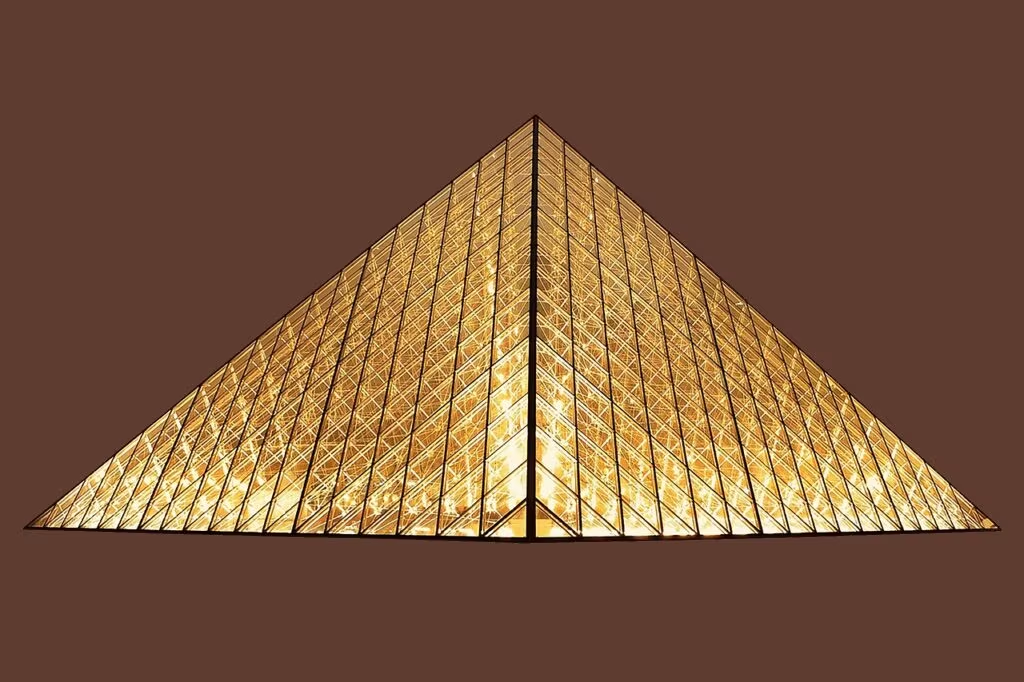The Teenager Who Became an Internet Mystery
The global speculation surrounding the identity of the mysterious figure dubbed the “Fedora Man,” captured in a viral photograph at the Louvre Museum on the day of the infamous crown jewels heist, has finally been resolved. The individual in the image, whose distinctive attire fueled weeks of internet sleuthing and wild theories, is Pedro Elias Garzon Delvaux, a 15-year-old student from Belgium.
The photograph, taken by Associated Press (AP) photographer Thomas Padilla on October 25, 2024, placed the young man near the scene and time of the high-profile theft, inadvertently making him the focus of a massive online investigation—and confirming his complete innocence in the process.

The Anatomy of a Viral Sensation
The image, which quickly circulated across social media platforms, captured Pedro Delvaux wearing a dark fedora and large sunglasses while standing in the bustling museum. The combination of the dramatic headwear, the sunglasses, and the extraordinary context of the Louvre heist—where priceless jewels were stolen—led to immediate and widespread speculation that the “Fedora Man” was either a witness, an accomplice, or perhaps even the mastermind of the crime.
For weeks following the heist, the internet was saturated with memes, theories, and detailed analyses of the photograph. The mystery was amplified by the fact that the AP photo was taken moments before the museum was locked down by authorities investigating the theft.
Why the Photo Captured Global Attention
The intense focus on Pedro was driven by several factors that converged at a critical moment in time:
- Timing: The photo was taken on the exact day of the heist, October 25, 2024, placing him at the scene during the critical window.
- Location: He was photographed inside the Louvre, one of the world’s most famous museums and the site of the crime.
- Appearance: The fedora and dark sunglasses suggested a deliberate attempt at concealment or a dramatic flair, fitting the narrative of a cinematic crime caper.
- The Heist Context: The high-profile nature of the crown jewels theft provided a compelling, real-world backdrop for the mystery, fueling public desire for a clear narrative.
Unmasking the Real Pedro Delvaux
The reality behind the dramatic appearance was far more mundane than the internet imagined. Pedro Delvaux, who was on a school trip to Paris from Belgium, came forward after realizing his image had become a global phenomenon.
His decision to wear the distinctive combination of accessories was not a disguise for criminal activity, but rather a teenage attempt to mitigate a fashion disaster.
“I had a really bad haircut just before the trip,” Pedro explained upon revealing his identity. “I was trying to hide it. The fedora and the sunglasses were just the best way to make sure nobody saw my hair.”
The Associated Press confirmed the identity of the teenager after he and his family reached out. AP photographer Thomas Padilla, who captured the shot, noted that he was simply documenting the scene of tourists inside the museum before the lockdown, unaware he had captured a future internet legend.

From Suspect to Celebrity: The Aftermath
When Pedro first saw the photo and the ensuing media frenzy, his initial reaction was one of disbelief and concern. He realized the gravity of the situation when the image was being used by major news outlets globally, often accompanied by speculative captions linking him to the crime.
The confirmation of his identity and his alibi—being on a supervised school trip—put an end to the “Fedora Man” theories. Authorities confirmed that Pedro Delvaux was not, and had never been, a suspect in the Louvre crown jewels heist.
The incident serves as a modern example of how quickly and intensely internet speculation can attach itself to an innocent bystander, especially when combined with a high-stakes news event. Pedro, now a minor celebrity in his native Belgium, has handled the unexpected fame with humor and grace, though he remains wary of the power of viral content.
Key Takeaways from the ‘Fedora Man’ Saga
The resolution of the Louvre mystery provides important context on the intersection of major news events and internet culture:
- Innocence Confirmed: Pedro Elias Garzon Delvaux was definitively cleared of any involvement in the October 25, 2024, Louvre heist.
- The Power of Context: A simple fashion choice (hiding a bad haircut) combined with a major crime created a global conspiracy theory.
- Journalistic Verification: The Associated Press played a crucial role in confirming the teenager’s identity and story, moving the narrative from speculation to verified fact.
- Digital Footprint: The case underscores how easily and permanently individuals can be thrust into the public eye through candid photography and social media sharing, regardless of their intent.
Conclusion: The End of the Mystery
The unmasking of the “Fedora Man” closes a bizarre chapter of the Louvre heist narrative. While the actual perpetrators of the crown jewels theft remain the focus of ongoing investigations, the identity of the mysterious figure in the photograph is no longer a source of speculation. Pedro Delvaux, the Belgian teen who just wanted to hide a bad haircut, can now return to being a regular student, albeit one with an unforgettable story of accidental internet fame.
What’s Next
While Pedro Delvaux’s role in the story is concluded, the investigation into the actual Louvre crown jewels heist continues. Authorities are still working to recover the stolen artifacts and identify the professional criminals responsible for the sophisticated operation that occurred on October 25, 2024.
Original author: Thomas Adamson
Originally published: November 10, 2025
Editorial note: Our team reviewed and enhanced this coverage with AI-assisted tools and human editing to add helpful context while preserving verified facts and quotations from the original source.
We encourage you to consult the publisher above for the complete report and to reach out if you spot inaccuracies or compliance concerns.

